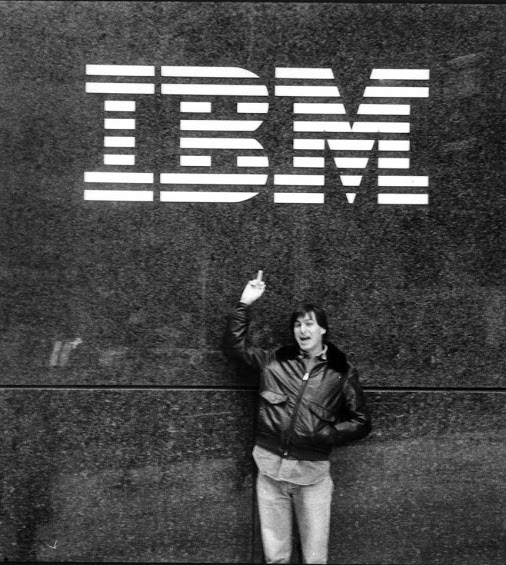By John Gruber

Copilot Money — The Apple Editor’s Choice money tracker. Now also on the web.
The Flimsiness of ‘Business vs. Consumer’ as a Justification for Apple’s Rejection of Hey From the App Store for Not Using In-App Purchases
Tuesday, 16 June 2020
David Pierce, in an update to his Protocol report (which I commented on earlier):
Apple told me that its actual mistake was approving the app in the first place, when it didn’t conform to its guidelines. Apple allows these kinds of client apps — where you can’t sign up, only sign in — for business services but not consumer products. That’s why Basecamp, which companies typically pay for, is allowed on the App Store when Hey, which users pay for, isn’t.
This statement is paraphrased by Pierce, not a direct quote, but on its surface this business/consumer distinction seems untenable.
First, no such distinction is made in the App Store Review Guidelines. The lone instance of “consumer” refers to the “Consumer Health Records API”. The price that Basecamp pays for not supporting in-app purchase in their iOS app is that they lose whatever number of users would have signed up in-app but won’t sign up out-of-app. That’s competition. Again, putting aside arguments that Apple should allow apps to use their own payment systems in apps, or be able to link to a website for sign up, or at the very least just tell users how to sign up — the makers of an app should be able to say “OK, we won’t even tell users how to sign up within our app; our app is only for existing customers and we’ll obtain all of them outside the app”. That seems to be within the written rules of the App Store Guidelines. Update: It actually isn’t within a close reading of the written rules, but Apple has long carved out a bunch of exceptions to this — as indicated by their own statement to Pierce.
Second, how could such a distinction be made in writing? There are some apps that are definitely “business services” and some that are definitely “consumer products” (games for example), but to say that the area in between encompasses many shades of gray is an understatement. The entire mobile era of computing — an era which Apple itself has inarguably largely defined — is about the obliteration of distinct lines between business and consumer products.
By sheer coincidence, before this controversy erupted I switched (at least temporarily) my public contact address for Daring Fireball to my @hey.com email address. I’m paying for Hey using the same company credit card I use to pay for Basecamp. How is that not a business service? I’m sure as shit reporting it to my accountant that way. Who exactly is paying $100/year for email service and not using it for business in some way?
I’m not trying to be coy, but what is the iPhone itself? A business device or a consumer product?
Using or instead of and as the conjunction there is clearly laughable. iPhones (and iPads, and Macs, and AirPods, and just about everything else Apple makes) are both serious work-related business devices and totally fun great-for-play consumer products — often for the very same people. The same is true for almost any communication service. Is Apple’s own iMessage for business or consumers? Of course it’s both.
Pierce, in a follow-up on Twitter:
One other distinction: Apple allows “Reader” apps — things like Netflix and Kindle and Dropbox, where you’re using the app to access existing subscriptions — as long as they don’t offer a way to sign up. But email, messaging, etc. don’t count as Reader apps.
At some level there’s a clear distinction here — Netflix and Kindle are clearly consumption services.1 But Dropbox? Dropbox is a lot closer to an email or messaging service like Hey than it is to Netflix or Kindle. The stuff in my Dropbox account is every bit as personal as the stuff in my email account. When you put Dropbox in the same bucket with Netflix and Amazon Kindle, it seems to me like the distinction is not so much between what is and isn’t a “reader” app or what is or isn’t a “business” app, but between companies which are too big for Apple to push around and those they can.
The tragedy here is that Apple, since its inception, exemplified the folly of such distinctions. The Apple II and Macintosh weren’t consumer/toy computers in answer to ostensibly professional/serious computers from suit-and-tie companies like IBM. Apple’s own hardware and software showed that such distinctions were not just unnecessary, but were harmful, holding back the entire industry under artificial signifiers of “seriousness” that were every bit as much bullshit when it came to how computers looked and worked as was how the employees of the companies that made them dressed for work.
Here, to me, is the only sensible response to any attempt to draw a stuffy distinction between “business” and “consumer” computing.
-
As for the term “reader app”, that certainly applies to Kindle quite literally, but Netflix not so much, insofar as Netflix — unless you dig deep into its settings — won’t even let me read the goddamn credits for the show I just watched before trying to hustle me on to the next episode. But that’s neither here nor there. ↩︎

